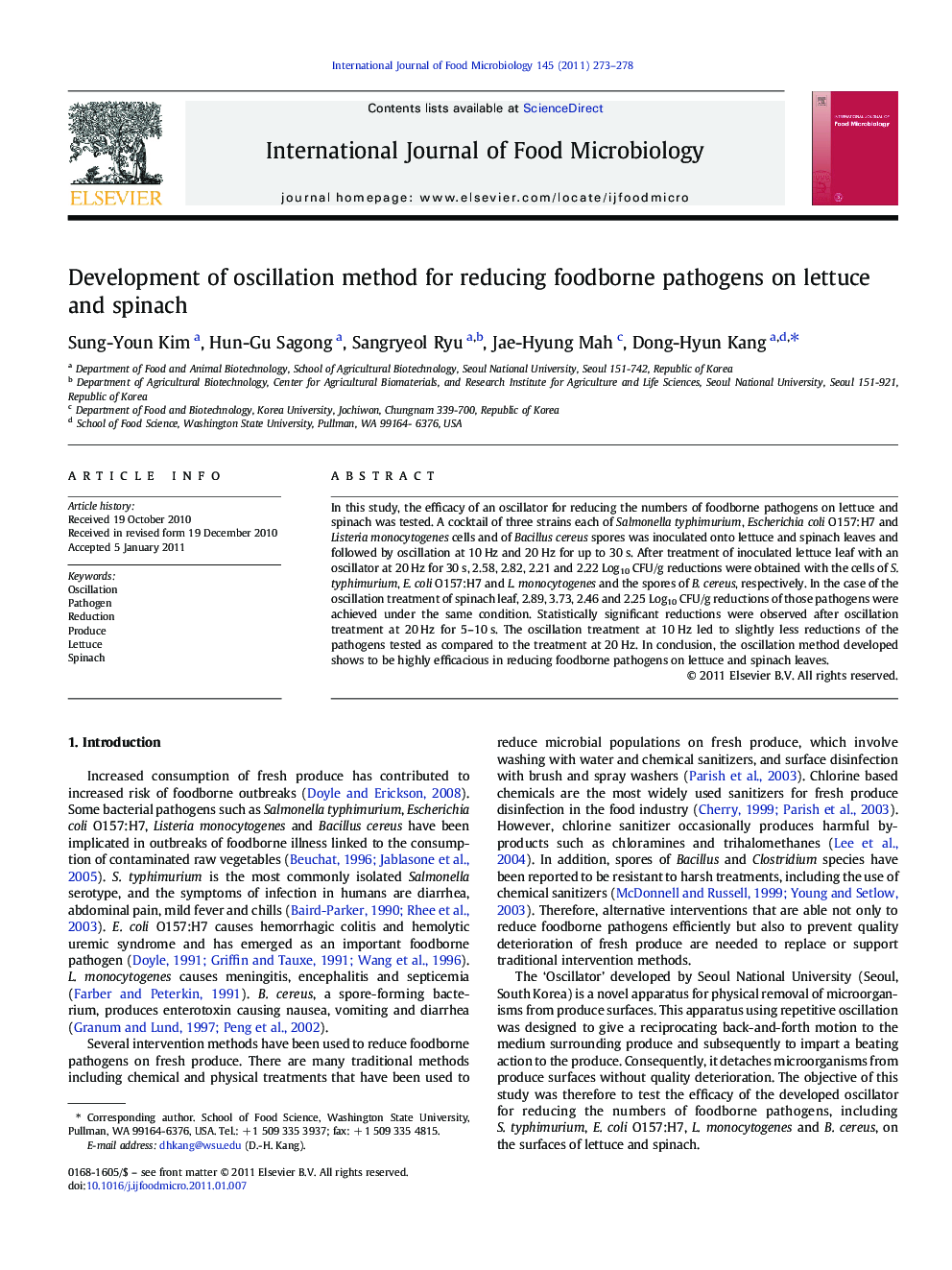| Article ID | Journal | Published Year | Pages | File Type |
|---|---|---|---|---|
| 4368753 | International Journal of Food Microbiology | 2011 | 6 Pages |
In this study, the efficacy of an oscillator for reducing the numbers of foodborne pathogens on lettuce and spinach was tested. A cocktail of three strains each of Salmonella typhimurium, Escherichia coli O157:H7 and Listeria monocytogenes cells and of Bacillus cereus spores was inoculated onto lettuce and spinach leaves and followed by oscillation at 10 Hz and 20 Hz for up to 30 s. After treatment of inoculated lettuce leaf with an oscillator at 20 Hz for 30 s, 2.58, 2.82, 2.21 and 2.22 Log10 CFU/g reductions were obtained with the cells of S. typhimurium, E. coli O157:H7 and L. monocytogenes and the spores of B. cereus, respectively. In the case of the oscillation treatment of spinach leaf, 2.89, 3.73, 2.46 and 2.25 Log10 CFU/g reductions of those pathogens were achieved under the same condition. Statistically significant reductions were observed after oscillation treatment at 20 Hz for 5–10 s. The oscillation treatment at 10 Hz led to slightly less reductions of the pathogens tested as compared to the treatment at 20 Hz. In conclusion, the oscillation method developed shows to be highly efficacious in reducing foodborne pathogens on lettuce and spinach leaves.
Research Highlights► An oscillator was developed to reduce the numbers of foodborne pathogens on produce. ► Lettuce and spinach leaves inoculated with pathogens were treated with an oscillator. ► The oscillation method is efficacious in reducing foodborne pathogens on the leaves.
